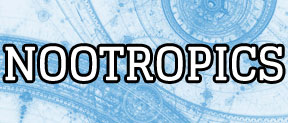Nootropics are relatively new in modern day language, giving birth to a whole new segway of how we refer and interact with brain boosters, memory enhancers, and cognitive function accelerators.
Home
Pure Nootropics: The Future of Being Smart
Smart Drugs Risk vs Brain Booster Rewards?
What are Nootropics?
Utopia Neuroscience? Smart Drugs?
Natural Nootropic Supplements
Purest Ingredients For Long Lasting Results
Brain Boosting & Building Benefits
More Mental Energy? Clarity? Focus?
Cognitive Memory Enhancements
Better Concentration for a Healthy Overachiever?
Do Natural Cognitive Enhancers Work?
One might call it the faint-fated fabled fountain of youth, but the truth is – there is and are people who are actively, currently and vibrantly using nootropics as an activation and stimulation mechanism towards improving memory, focus and concentration.
The irony is they are not new. Created In 1978 a Romanian Doctor Corneliu Giurgea, who first coined the term nootropics which literally stands for mind bend in Greek.
However, natural nootropic supplements are relatively new and do not require prescriptions like many smart drugs do.

Pure Nootropics is dedicated to delivering divine direction when it comes being a brainiac, aka; smart drugs and savvy brain boosting supplements, clarity clearness and memory improvement, cognitive enhancement and mind energy function information that helps you experience peak performance in the building a beautiful brain and body.
It is said that your brain is only 2% of your entire body mass, yet consumes and burns upwards of 20% of your daily energy sources and so the quest and search for how to build and boost your brain naturally becomes vitally important and significant.
Our sole goal and chief aim is to give decisive and distinct knowledge about the direct truth about what works and what should be avoided for nootropic side effects.
You do not have to be obnoxiously obsessed with brain betterment to digest this knowledge, truth, and wisdom expressed here. Nootropics are and will continue to be a growing industry as they becoming a more in-demand commodity – even more than building muscle, losing weight, cleaning skin and growing hair.
Your brain is the gateway to “better everything”.
We are going to dive deep into the world of natural nootropic nutrients and smart drug ingredients that you can start utilizing and leverage today – without the harmful back lash of prescription drugs and medication.
Please keep in mind that all the information shared and expressed on PureNootropic.com is for research and educational purposes only. All the thoughts, feelings and actions alluded to are based on personal experience and due diligence into the expanding world of “a better functioning brain”.
This indicative nature of interest cultivating and surrounding cognitive enhancers is only a matter of time as we become a society obsessed with anti-aging serums, lotions, and potions in the race against father time. Nootropics seem to be the proverbial umbrella in which all of the brain boosters, cognitive enhancers, smart drugs, and focus supplements seem to be falling and following under.
How can we blame anyone who is searching for all natural solutions and alternatives to prevent, slow, avert or even reverse the signs of brain deterioration before it becomes a irreversible pattern and problem. We like to reemphasize one of our favorite health quotes, in that, “an ounce of prevention is worth a pound of cure”. That being said, smart drugs are not cures, however that is why we are piecing this nootropic supplement guide together to give you the guidelines and gameplan for which you should look and act upon moving forward.
There's a lot of history, science and technology leading up to the new-age evolution of Nootropics. Many wonder if it can be a real, viable anti-aging medicine of the future. We think so. Que Lucy and Limitless movies for confirmation that this will happen sooner or later – and is happening now.
Nootropic Brain Supplements: Natural Neurotransmitter Nonsense?
The aging of the brain is a common issue most people will face and most people have accepted mental deterioration as a “natural part of aging.” Several neurologists have claimed that we would all become senile if we lived long enough. Our problems typically start with lack of concentration, a short attention span, slowed learning, and an inability to recall memories.
The goal should be to spot these signs rather than wait for them to fully take effect. While they might seem unimportant at first, they may become a problem down the road.
History of Nootropics
Nootropics have been around since 1972, when the science behind nootropics took off thanks to piracetam. A famous doctor named Dr. Giurgea formulated an brand new category of drugs which he named “nootropics” which means “towards the mind” in Greek.
Giurgea defined nootropics as “Something that enhances learning and memory. A nootropic should protect the brain against physical or chemical injuries. They should increase the efficacy of cortical and subcortical control measurements. They should possess very few, if any side effects and should have low toxicity.”
Today the classification of supplements and drugs known as “nootropics” is used in a much broader sense but the definition used by Giurgea still holds true today.
Basics of Nootropics
A nootropic can affect the body in a variety of ways to ultimate influence neurotransmitters in the brain. For example, a nootropic may help inhibit enzymes that break down neurotransmitters like monoamine oxidase. Although not common, there are nootropics that act as accelerators and actually increase neurotransmitter uptake.
A number of nootropics improve the electrical activity of the brain. Vasodilation is another key component of many nootropics. Vasodilation is the improvement of blood circulation, which is essentially because the smallest arteries and veins are found in the brain. Although blood circulation is closely associated with vasodilation, there are other factors that come into play like the uptake of glucose.
In addition, receptor sensitivity falls into its’ own category where certain substances can upgrade receptors to act aggressively to a stimulus without physically increasing chemical levels. The new drug Modafinil is a good example of this.
Important Brain Facts
Before we dive deeper into some of the most common nootropics, we need to understand some basic facts about the brain. Typically speaking, the human brain weighs about three pounds, which is 2-4% of the total body weight. There are an estimated 10 to 100 billion neurons in the brain and ten times the amount of glial cells – which structurally and nutritionally support neurons.
While the brain may weigh only 3% of the total body weight of a human, it receives about 15% of the body’s total blood supply and oxygen. The brain uses this oxygen, along with glucose, to burn approximately 20% of the body’s total adenosine triphosphate (ATP).
ATP Production and the Brain
Other cells in the body can burn fat or glucose to satisfy energy needs whereas neurons can only burn glucose under normal conditions. Unlike liver and muscle cells, which can store a substantial amount of sugar as glycogen, neurons only store a minimal amount of glucose. Therefore, neurons are incredibly dependent on a continuous supply of oxygen and nutrients to maintain a normal energy metabolism throughout your entire life.
In addition, most other cells continually reproduce throughout a lifetime. However, once the brain reaches its full complement of neurons, they never reproduce and are essentially irreplaceable.
Under normal conditions, neurons convert glucose into energy as ATP. This is a three-step process that starts when glucose is metabolized into ATP and pyruvic acid is produced as a by-product. The pyruvic acid is then metabolized through the Krebs cycle, and NADH is produced. NADH is transported to the mitochondria where it is converted to produce more ATP.
This process should yield a maximum of 38 molecules of ATP per one molecule of glucose under normal circumstances. If the neurons are undersupplied with oxygen, only two molecules of ATP are produced per molecule of glucose.
Functions of ATP in Neurons
So why is this process so important to understand? Neurons have three main uses for ATP. They are for maintenance, electrical, and neurotransmission purposes. Since neurons do not reproduce and must last a lifetime, they are continually expending energy to repair cell components.
ATP is also used to transport, package, secrete, and rep-uptake neurotransmitters that provide cell-to-cell communication. Without this function, the other parts of your body wouldn’t function.
Finally, massive amounts of ATP are required to facilitate the frequent discharge of electrical energy from the neuron through the cell body where signal processing occurs. The whole process requires electrical energy from the receiving end of the neuron (the dendrites) to the transmitting end of the neuron (axon).
This process requires a rapid and continuous exchange of sodium and potassium ions back and forth across the neurons. ATP powers this exchange through ATPase enzyme systems. Some estimates indicate that as much of 45% of a neuron’s ATP may be used to power this exchange.
What Happens When Oxygen or Blood Flow is Halted
If breathing stops or if blood flow to the brain is interrupted, unconsciousness will rapidly occur. As the delivery of oxygen to the brain becomes limited, neurons will rapidly shift from aerobic to anaerobic energy metabolism, which drops energy production by 95%. This means that there will simply not be enough energy to facilitate the electric process, which is the basis for consciousness. In addition, if aerobic metabolism is halted for too long, there may be permanent damage to cells or even cell death. When this occurs, it is sometimes called a “brain energy crisis.”
For most people, this is not something they are most likely going to deal with on a regular basis. However, it is more likely that a slow-developing issue can occur over the course of a lifetime in the form of a stroke, a ischemic attack, or cerebral arteriosclerosis. In other words, a brief interruption of blood flow to the brain due to blood vessel spasm is much more likely.
In the early stages, the effects of a mini-stroke may cause slightly memory impairment, confusion, or lapses in concentration. However, the advanced stages may lead to coma or even death.
Another issue that can arise from a brain energy crisis is the development of dementia. Doctor Branconnier noted how severe dementia is and how it is directly correlated to the loss of function brain tissue. Several studies have found that oxygen uptake, glucose utilization, and cerebral blood flow are all impaired in several forms of dementia.
Another prominent molecular researcher, Abram Hoffer, suggested that neurons in the brain switch to anaerobic glycolysis when oxygen becomes deficient. He claimed that when this process occurs, there many be enough energy for neurons to survive but there will not be enough energy for the neurons to operate normally or efficiently. This process essentially caused neurons to go “offline” and in an idling state. However, if aerobic metabolism is restored before permanent damage occurs, then neurons can begin to properly function once again.
Hopefully you now realize how important the brain is and how much energy it truly needs. The consequences of a brain energy crisis are severe, even when energy production is interrupted for a short period of time. Of course blood flow gradually decreased as we age. However, many leading researchers agree that the accumulation of toxins, especially heavy metals like aluminum and mercury will speed up this process.







